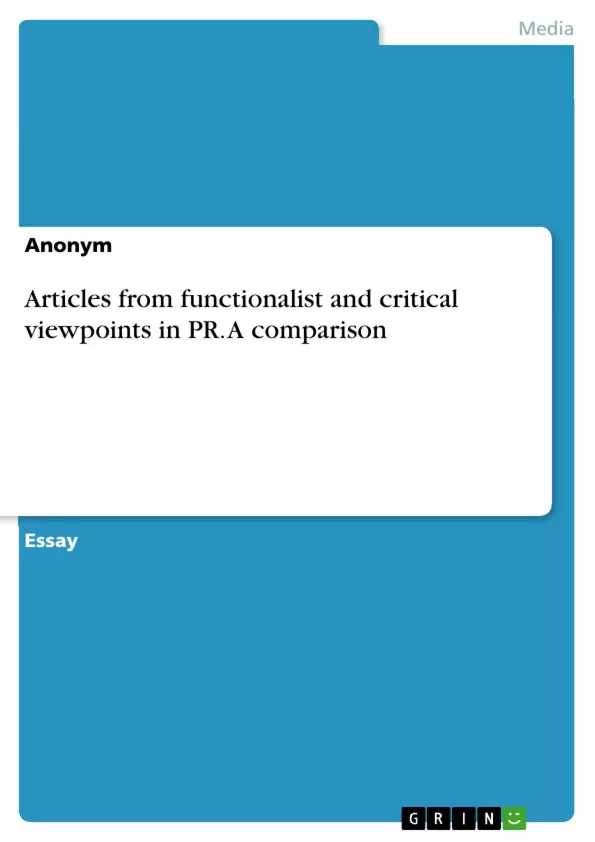This paper aims to illustrate a contrast between two writings, namely, from the dominant paradigm's point of view, and writing with notions of the critical paradigm. It also demonstrates the differences between the two paradigms. The focus will be on expounding the purposes and objectives of the pieces of writing, as well as on the assumptions, arguments and the evidence presented in them.
By comparing the articles ‘Public Relations Theory in Practice’ from Heath and Coombs (2006) and ‘Public Relations Models and Persuasion Ethics: A New Approach’ from Fawkes (2007), it is important to keep in mind, that the first text is written from the dominant paradigm's point of view, whereas the latter espouses the notions of the critical paradigm.
To be able to contrast the two texts, first it is necessary to provide simple definitions of the paradigms. In general, a paradigm is a worldview, which influences the way in which people understand the world around them. Therefore, a dominant paradigm is the most popular worldview which is adopted by most people and dominates the debate. It is also regarded as the most important approach, which comprises a set of beliefs (assumptions), that the discipline represents.
The most essential point of a critical paradigm from the perspective of this paper is that it aims to challenge the dominant paradigm. A desirable result would be a paradigm shift, which is usually the aim of moving between two paradigms, for example the shift from traditional environmental paradigm to the paradigm of sustainable development. This knowledge can be applied to the discipline of Public Relations and helps to contrast both articles.
Inhaltsverzeichnis (Table of Contents)
- Comparison between articles from functionalist and critical viewpoint
- Definitions of paradigms
- Heath and Coombs' (2006) article
- Fawkes (2007) article
Zielsetzung und Themenschwerpunkte (Objectives and Key Themes)
This paper aims to compare two articles from the functionalist and critical paradigms, highlighting their differences. The main focus is on the purposes, assumptions, arguments, and evidence presented in each text, demonstrating the contrasting perspectives of these paradigms within the discipline of Public Relations.
- Defining and contrasting functionalist and critical paradigms in Public Relations.
- Analyzing the purposes, assumptions, and arguments presented in each article.
- Examining the evidence used in each text and its implications for the respective paradigm.
- Exploring the role of ethics and persuasion in Public Relations from both perspectives.
- Evaluating the limitations and strengths of each paradigm in understanding Public Relations.
Zusammenfassung der Kapitel (Chapter Summaries)
- The paper begins by defining the functionalist and critical paradigms, emphasizing their contrasting worldviews and approaches to understanding the world.
- It then analyzes Heath and Coombs' (2006) article, which exemplifies the functionalist perspective by focusing on practical skills and applying theories to Public Relations practice.
- The paper then contrasts this with Fawkes' (2007) article, which adopts a critical perspective by challenging the dominant paradigm and proposing a more ethical approach to Public Relations.
Schlüsselwörter (Keywords)
The key terms and concepts explored in this paper include Public Relations theory, functionalist paradigm, critical paradigm, persuasion ethics, dominant paradigm, assumptions, arguments, evidence, reflexivity, interdisciplinary perspectives, ethics, and the role of Public Relations in society.
- Quote paper
- Anonym (Author), 2011, Articles from functionalist and critical viewpoints in PR. A comparison, Munich, GRIN Verlag, https://www.grin.com/document/972392



